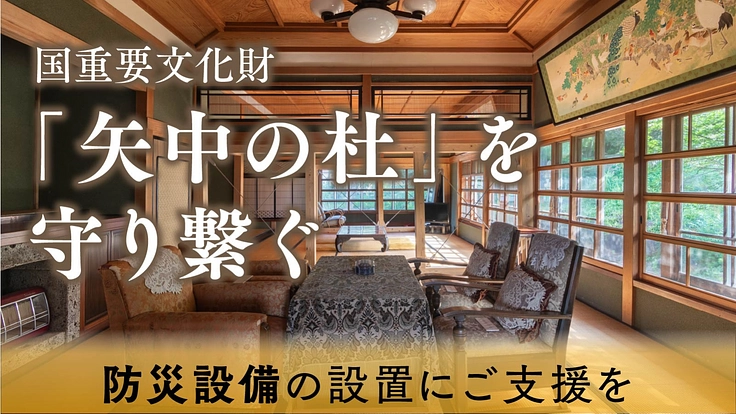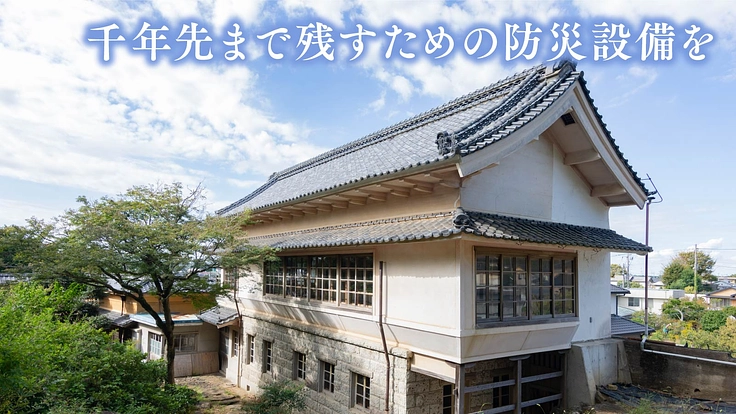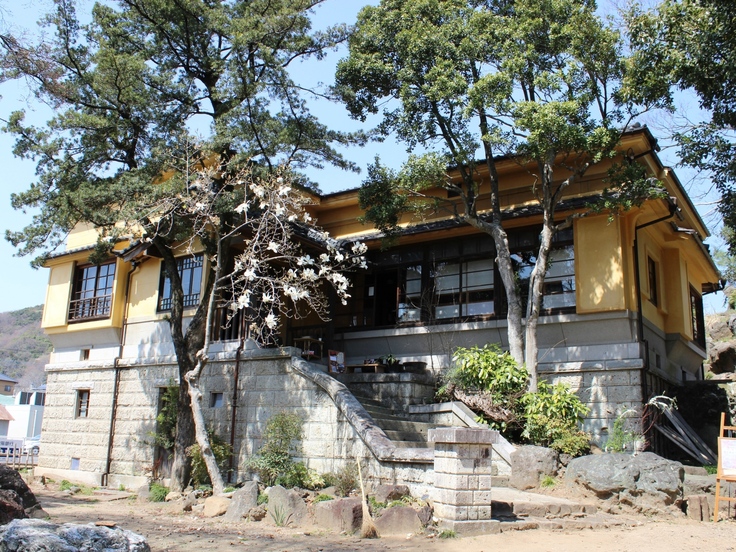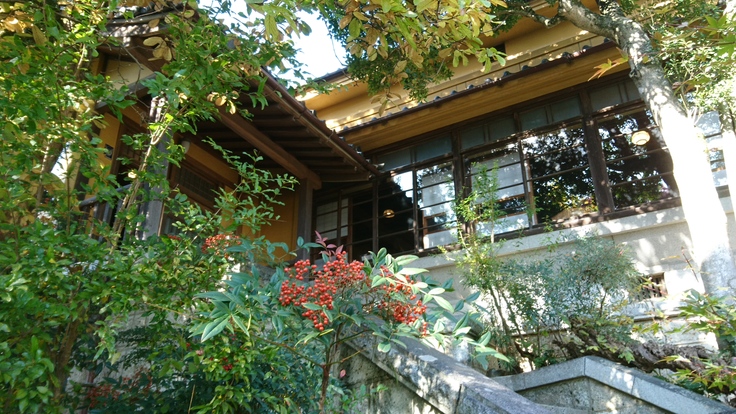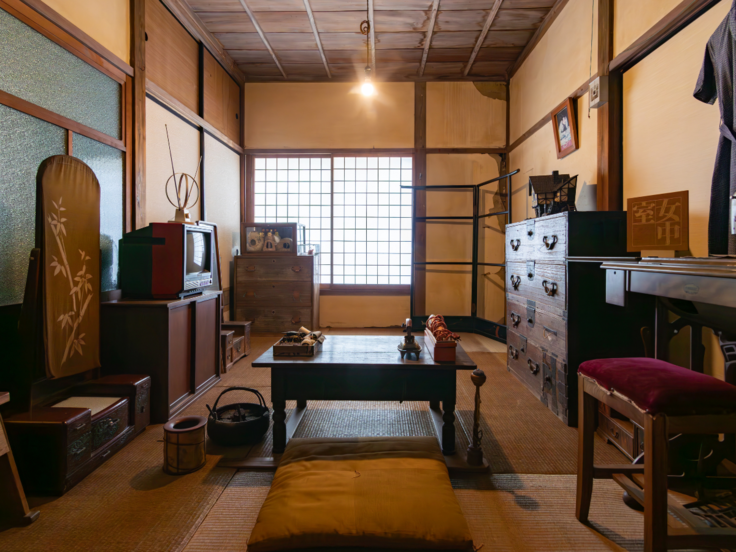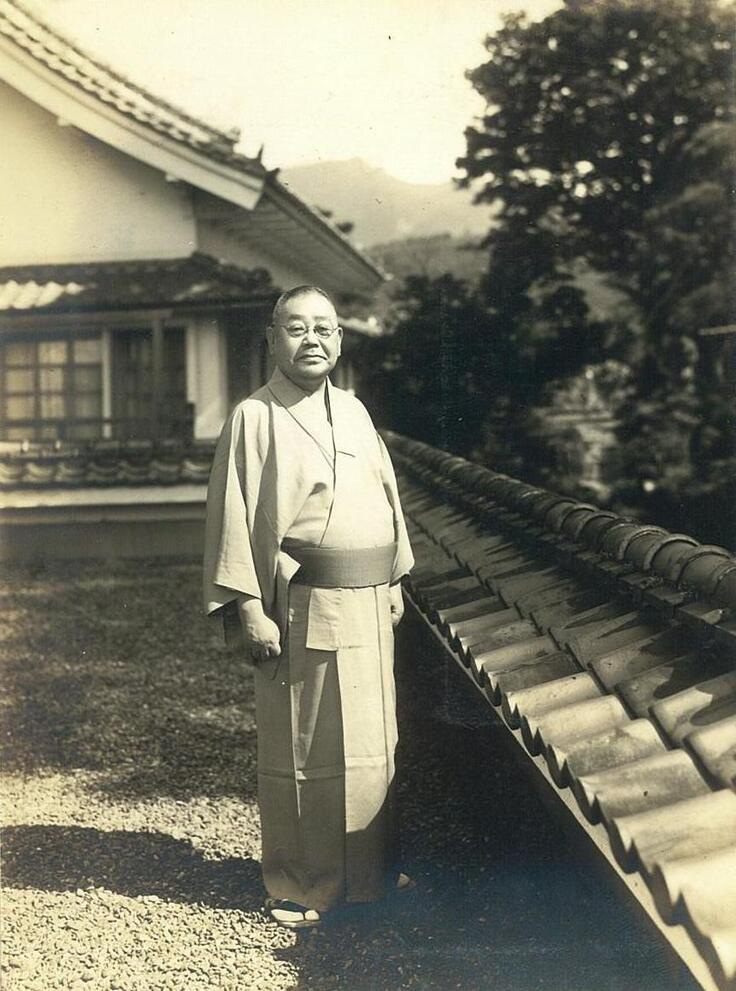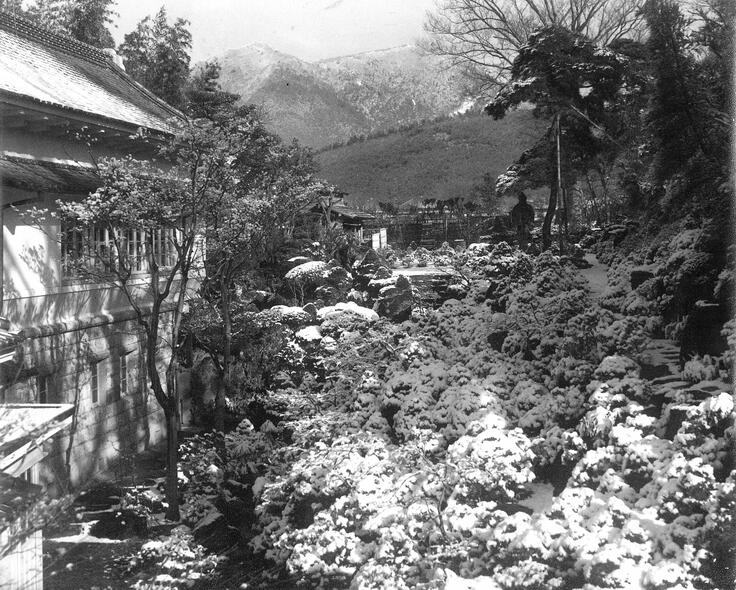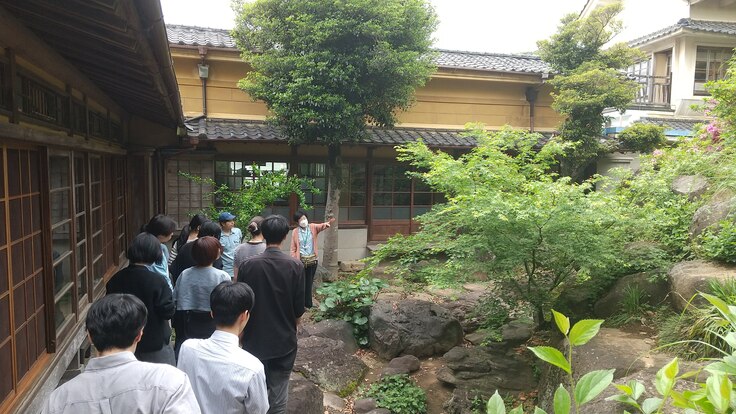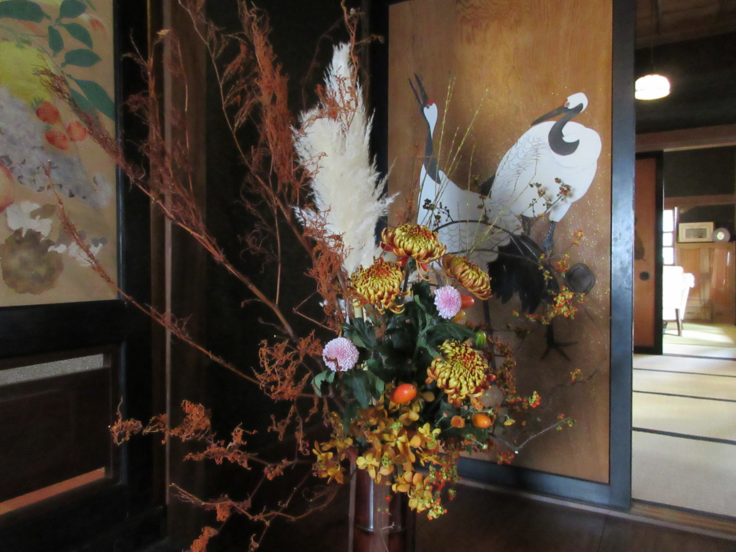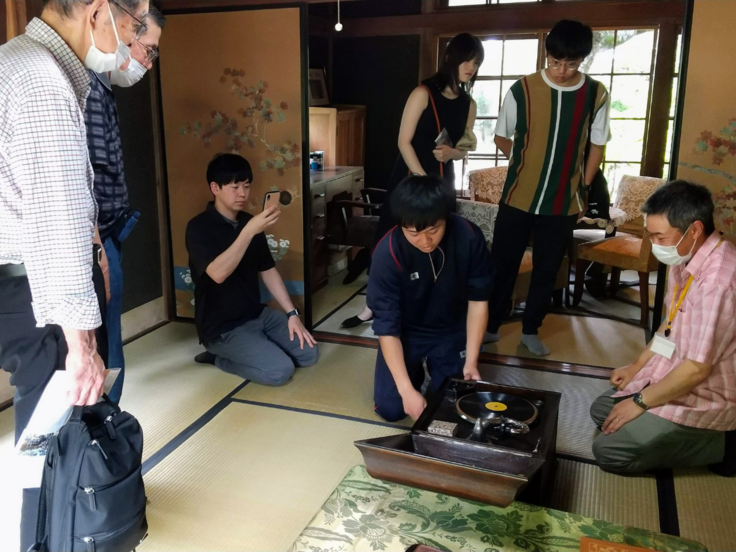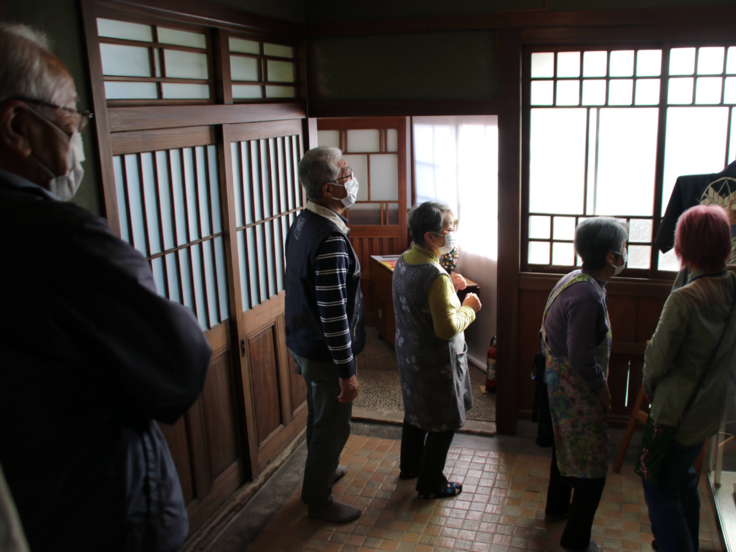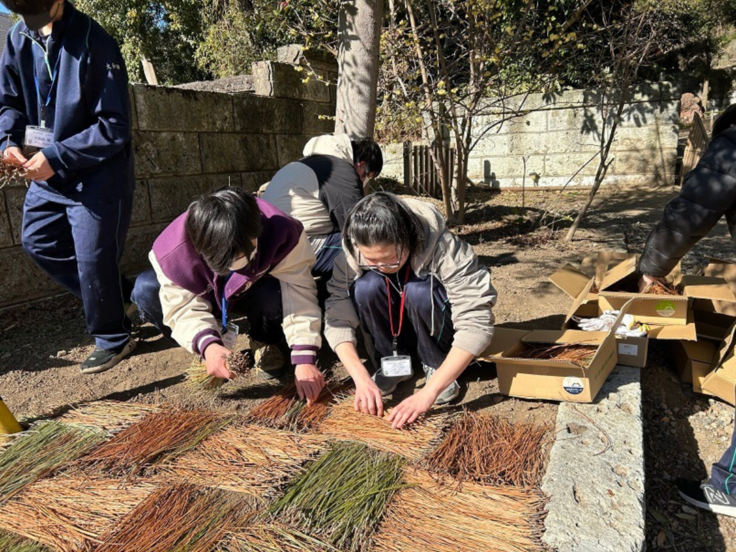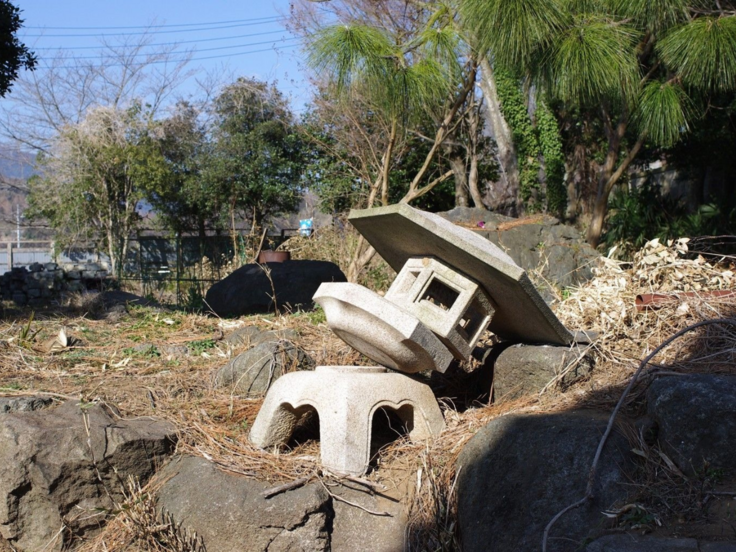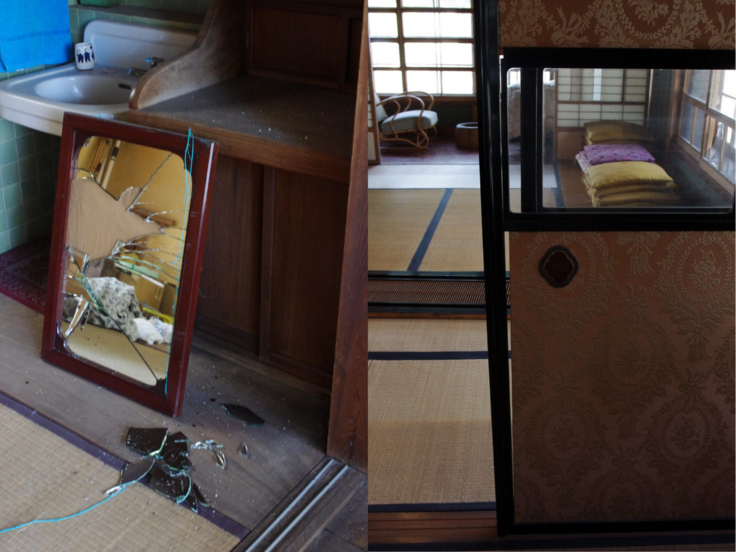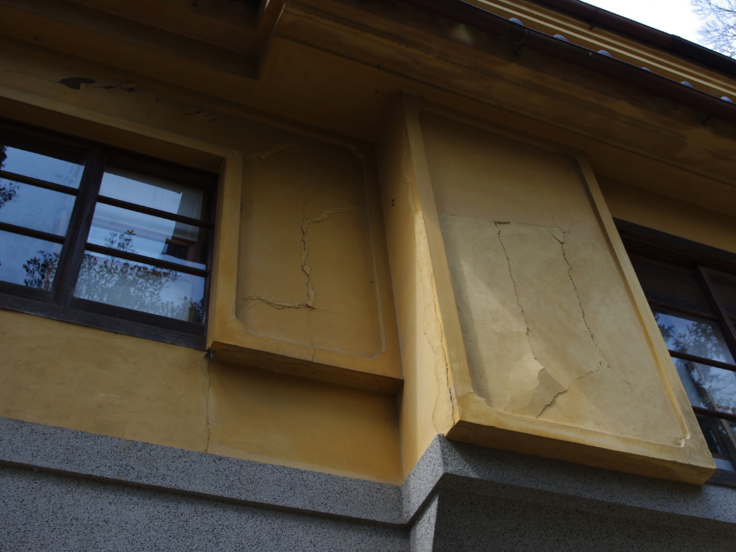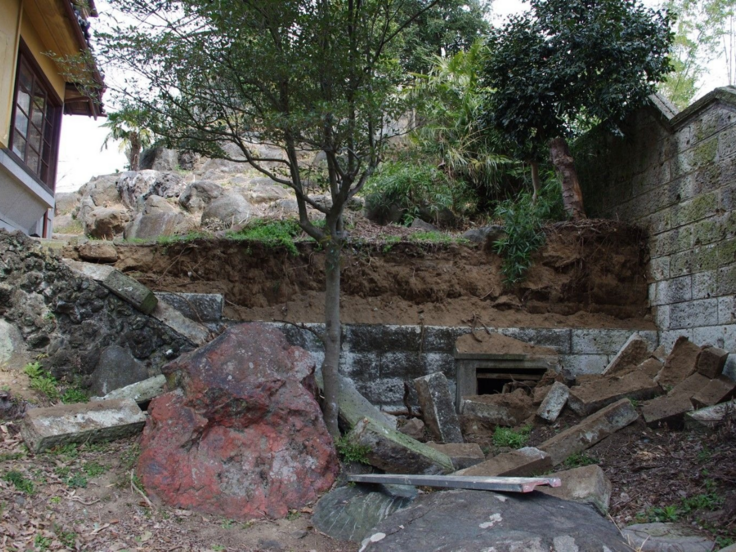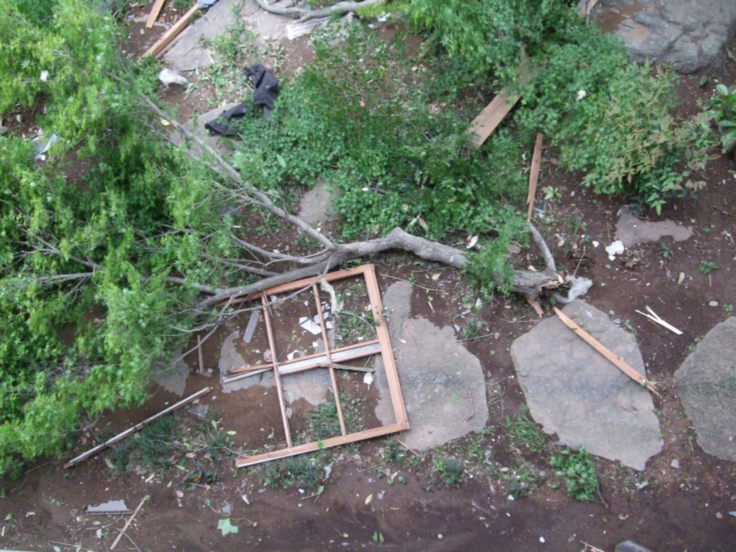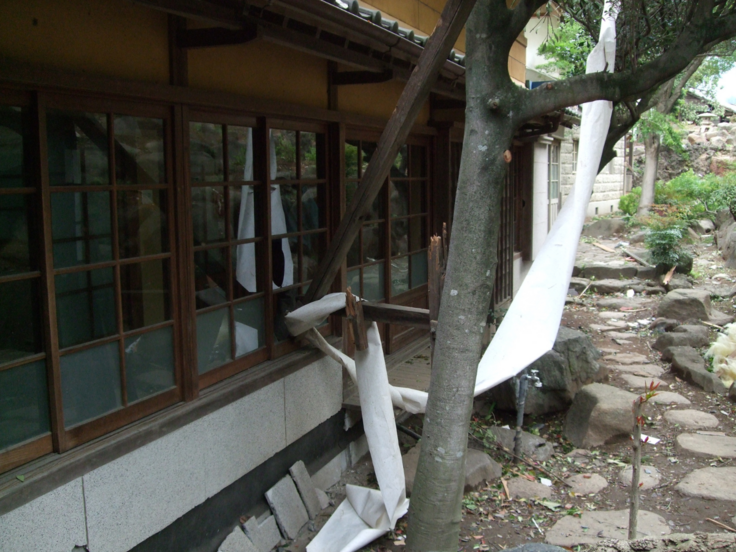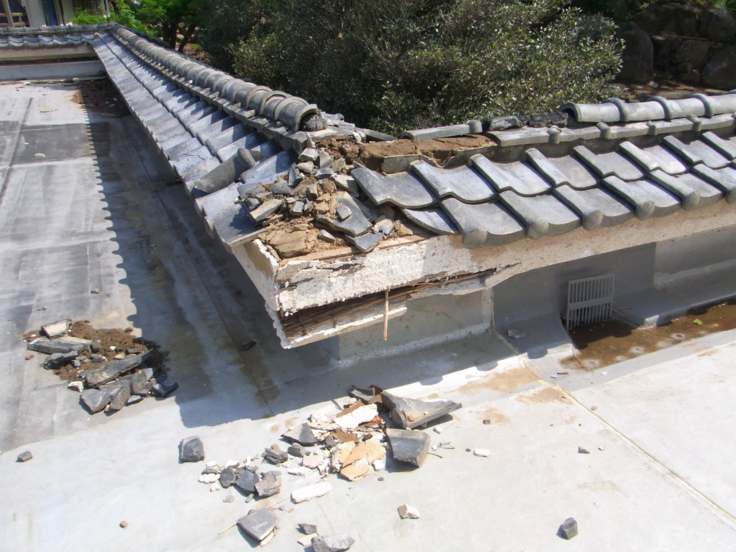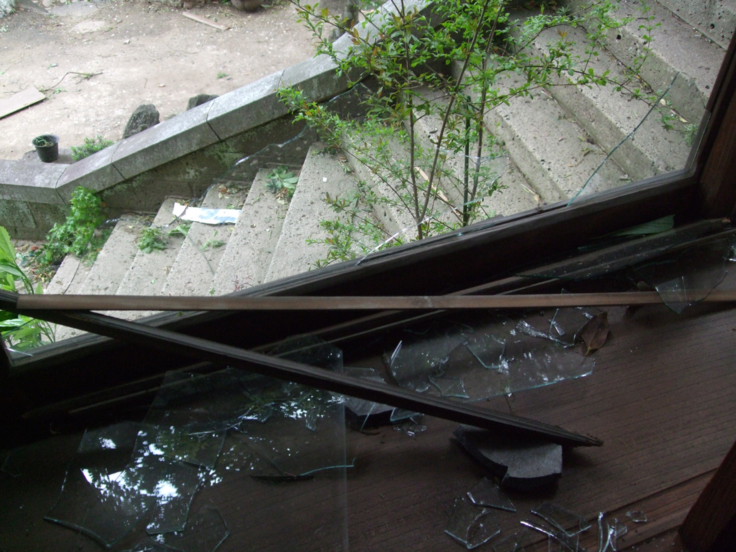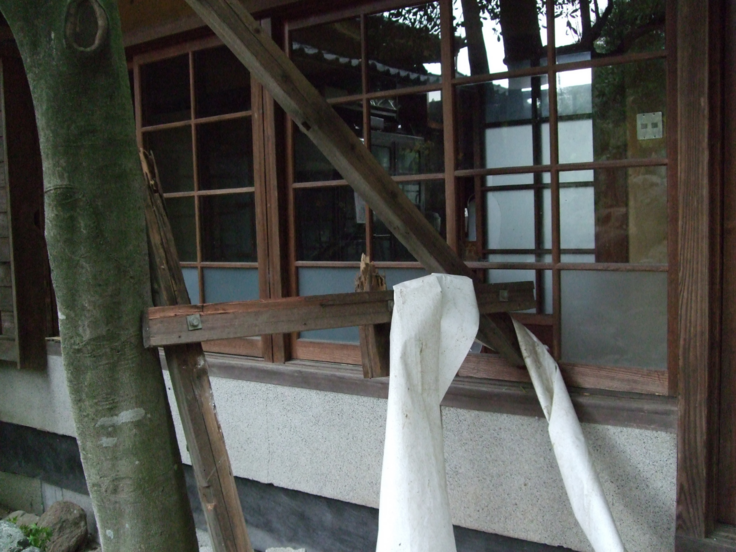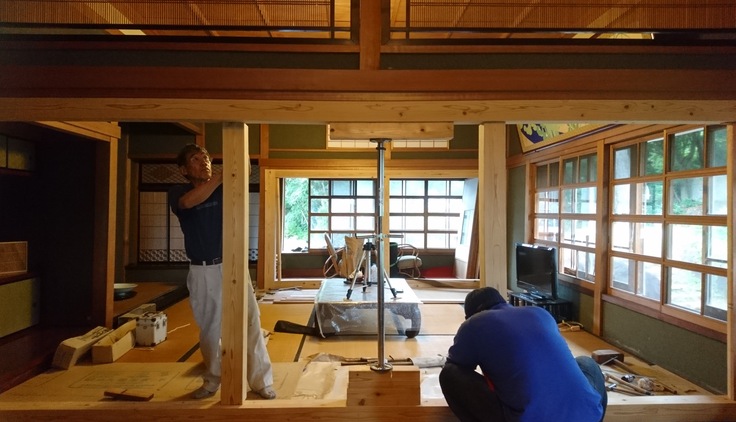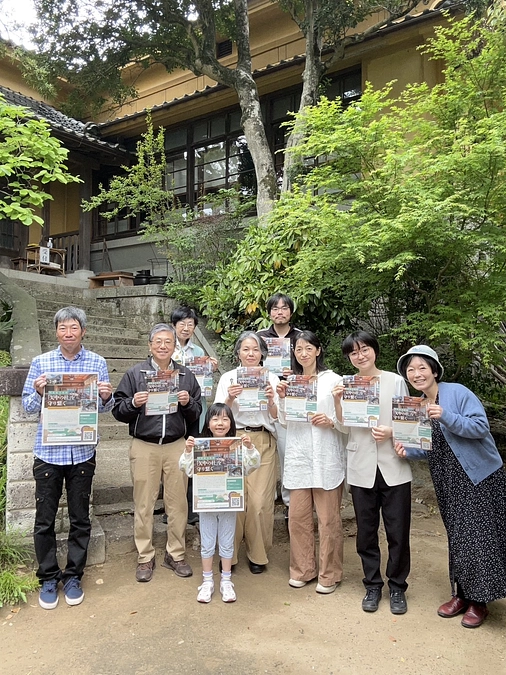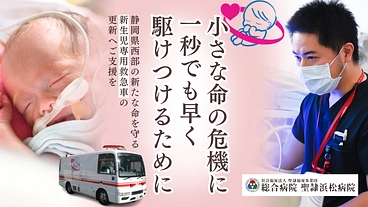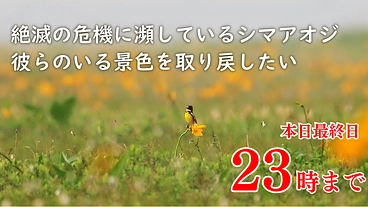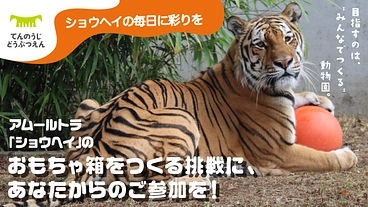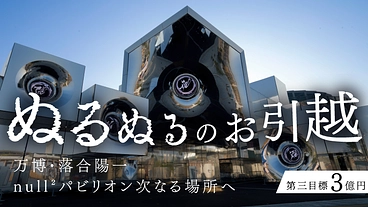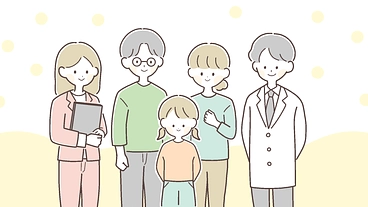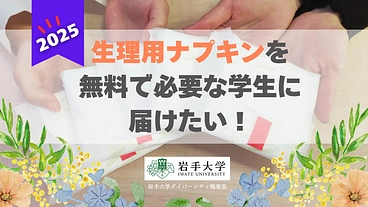支援総額
目標金額 3,000,000円
- 支援者
- 231人
- 募集終了日
- 2025年6月14日
(English Page)Project Page
▶ (English Page)How to Support by Credit Card
y
Inheriting “Yanaka-no-Mori” |
Installation of Disaster Prevention Facilities to Preserve the Historic Architecture for Millennia
“Yanaka-no-Mori” is a modern Japanese-styled architecture built between 1938 to 1953, located in the Hojo district of Tsukuba city in Ibaraki. The original owner, Ryujiro Yanaka aspired to materialize housings to endure the humid climate of Japan for thousands of years to come. Mr. Yanaka enhanced the natural ventilation and used optimal materials for his “Millennia house”. The noble wood and the craftsmanship in the pieces of art as the interior, and the vintage furniture are a feature of this property.
The property was registered as a national tangible cultural property in 2011 and upgraded to a national important cultural property in 2023. However, it sustained damage from the Great East Japan Earthquake in 2011 and the most disastrous tornado ever recorded in Japan the following year. In addition to that, climate change is deteriorating the situation, making it harder to preserve the property.
The guardians that are preserving Yanaka’s “Millennia house” are called “Mori-bito” (which means “guardian” in Japanese). We “Mori-bito” are working hard throughout the year to maintain the “Millennia house” to last for the following thousands of years. To prepare for future disasters, installation of fireproof facilities is a top priority issue. Thus, we made the decision to try fundraising to update the fire prevention standards of the property.
We would be grateful to spread the word of “Yanaka-no-Mori” and take part in supporting our activity to save the historical architecture.
Unfortunately, our generation taking part in this fundraising will not live to the next millennium. Though we hope that our activity will be passed down to future generations.
We appreciate your cooperation and support!
▶ How to Support by Credit Card ◀︎
The Hojo district of Tsukuba city in Ibaraki is located at the foot of Mt. Tsukuba, the sacred mountain of Kanto region.
Step aside the historical main street of Hojo, and you can see the golden-yellow facade of the mansion surrounded by a grove of trees. This is “Yanaka-no-Mori”.
The owner of the mansion was Ryujiro Yanaka. Born and raised in Hojo, Mr.Yanaka became a building material researcher and then the founder of what is now a waterproof material manufacturer called Manol. The mansion is of Japanese-styled architecture. The construction started in 1938 lasting for 15 years.
Within the land of over 2500 m2, stands the main building (house for living) of the mansion with a remarkable golden-yellow facade. Next to that stands the solid 2-story annex (for guests). Surrounding those is a vast Japanese garden.
Mr. Yanaka had exceptional thoughts and desires in the background of the creation of “Yanaka-no-Mori”.
Throughout his life, Mr. Yanaka invented and commercialized various building materials. Based on his success, he started construction on this mansion in his hometown as an icon of his glory.
Mr. Yanaka referred to his mansion as “Constructing the ideal wooden model house by applying my inventions achieved through my lifelong research”. Mr. Yanaka was confident that his masterpiece would “last for millennia”.
The mansion was designed based on traditional wooden architecture. Throughout the layout, unique structures, materials and ideas reflecting Yanaka’s architectural perspectives can be observed. The interior is posh and astonishingly lavish.
A remarkable feature of the architecture is the natural ventilation system. There are numerous vents and structural designs that have played a crucial role in preserving the robusticity of the building under the notorious humidity of the Japanese climate.
The mansion was so lavish that it was then called the “Yanaka palace” by the locals.
After the passing of Mr. Yanaka, the mansion was left abandoned and frozen in time for several decades.
However, the situation changed drastically in 2008. Hiroshi Mori who became the new owner of the mansion, and graduate students from the University of Tsukuba who “fell in love with the mansion at first sight” stood up to start a restoration project.
Rooms covered in dust, mold and cobwebs were carefully cleaned one by one. While dusting with cleaning cloths, records of the furniture remaining were taken. Members found old photos and notes and shared their imaginations on what the mansion used to look like.
Numerous goods that reflect the lifestyle back then have been left untouched, and the restoration brings them back to life. It was a moment as if time had been wound back and regained their glamor.
What had started as a clean-up project broadened the network of people involved. And as they gained more knowledge of the mansion, they started to believe that this is no ordinary mansion.
Volunteers gathered to “Preserve and use this mansion as a cultural heritage”.
They called the property “Yanaka-no-Mori” by combining the names of the former and current owners. An organization was then established to maintain and inherit this mansion.
This is how the mansion was reborn as “Yanaka-no-Mori”, and the establishment of the NPO (Non-Profit Organization) of “Yanaka-no-Mori no Mori-Bito” (or “The guardians of Yanaka-no-Mori”).
The members that have been mesmerized by the atmosphere of “Yanaka-no-Mori” and gather to preserve it are called “Mori-bito”.
Mori-Bito consists mainly of NPO members of different generations, interests and skills, and a variety of activities take place throughout the year.
Those who …
are interested in architecture
like history
are fond of the culture of Showa-era
are obsessed with the trees and stones in the garden
find joy of their life in weed picking
take photos as a hobby
just want to chill out
simply want to help without any particular reason
take part as Mori-Bito.
Everyone has their specific way to enjoy, and take advantage of their personal abilities while participating as a volunteer. This allows Yanaka-no-Mori to become a more attractive location.
Though diverse, there is one ultimate point, a thought that is common to everyone. “This place must be retained no matter what, but what is necessary to actually preserve it for the 1000 years coming?”. Keeping this point solid, members have been working on this project till this day.
The weekly open house day on Saturdays has been the main part of our activity since the establishment of the NPO. The Mori-Bito guide throughout the mansion, and explain the history and the characteristics of the building for the vistors to enjoy the magnificence of this masterpiece.
We do not only do work on the mansion, but actively participate in various events involving the usage of the mansion.
Furthermore, usage of this mansion is not limited to NPO members. It is open for guests to use. Privately reserving the whole mansion is possible too. It has been reserved for exhibitions, lessons and even filming locations for movies and dramas.
Through usages by guests, we can also uncover new perspectives to enjoy the magnificence that we would not even notice during our usual activities.
Ever since the kick off of the NPO, we have cherished the relationship with the locals. In particular, we have tied up with the local organization “Hojo Town Development Association”. Some are members of both the NPO and the local association.
The fact that we can work together with the locals is a brilliant support.
Based on the findings upon the restoration project, the mansion was registered as national tangible cultural property in 2011 under the name of “Former Yanaka Family Residence”.
Furthermore, it was recognized as an academically crucial sample of optimal housing for the Japanese climate, and superior craftsmanship. This allowed the mansion to be upgraded to a national important cultural property in 2023.
There might have been expectations that the mansion would be appropriately preserved, considering the positive work that had been done mainly by the NPO. This could have been a factor that played a role in the upgrade.
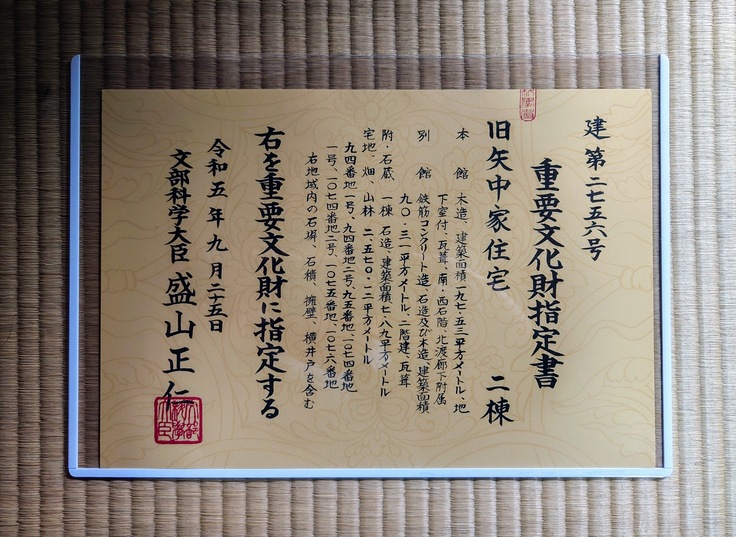
So, this whole story may sound like a painless success story. In fact, it is the complete opposite. We have encountered countless obstacles, one after another.
The mansion that had already worn out over time, encountered 2 severe natural disasters sustaining further damage.
①March 11 in 2011: The Great East Japan Earthquake
Due to the earthquake, the property experienced ground subsidence, fallen roof tiles, cracks on the facade, damaged furniture and collapsed block walls. Damage was seen throughout the entire property.
②May 6 in 2012: One of the strongest tornadoes recorded in Japanese history
The damage by the tornado was something different compared to the earthquake. The tornado turned debris into ballistic objects that were shot at the building causing disastrous damage.
The tornado shattered dozens of glass windows all of which miraculously withstood the 2011 earthquake. Both inside the mansion and the garden had debris everywhere.
Even though over a decade has passed since those disasters, the mansion still has not fully recovered. There are rooms and areas that cannot be used.
Additionally, recent climate change is affecting the preservation of the mansion, and work by the NPO.
Record breaking storms are causing roofs to leak, trees to fall, and the scorching heat during the summer is limiting our activities. There are always myriads of issues to solve. Also, earthquake resistance is a must in Japan.
Needless to say, a large sum of funds is necessary to correspond to those.
To put it simply, we have various difficult issues, and out of those “disaster prevention” is a crucial keyword considering “What is necessary for us to seriously preserve this for a thousand years?”
Refurbishing the current damage is one urgent issue, but fire prevention and earthquake resistance to prepare for the yet to come disasters is a large problem to be solved.
As the very first step, in order to meet the fire prevention standards required by law as a result of being upgraded to a national important cultural property is at top priority. Destructions of cultural property by fire can be seen every now and then on the news, and we are no exception.
Plans for “preservations and usages” and “disaster countermeasures” are a necessity to maintain this mansion as a cultural property. Based on that, earthquake resistance evaluations and seismic reinforcement work need to be accomplished. Huge challenges are awaiting.
We decided to give fundraising a try to take our next step, to raise budgets for constructions to meet the standards required by law as a national important cultural property.
Outlines of this fundraising
■The first goal:3,000,000 yen
*The fundings will partially be donated to the owner Mr. Mori from the NPO.
■Usage of funds: Fees for installing fire prevention facilities (Automated fire alarms), construction, office work and hiring experts.
《Classification of the fund》
Installation of fire prevention facilities :2,100,000 yen
Advertisements :80,000 yen
Return fee :70,000 yen
Fundraising expenses:750,000 yen
※About donations
Donations will be made to the current owner, Mr. Mori to compensate for the expenses to install fire prevention facilities. Mr. Mori has been notified about this donation.
Fundings exceeding our goal of 3 million yen will be used for “preservations and usages” and “disaster countermeasures” planning and earthquake resistance evaluations.
This project is “All or Nothing”. If we could not reach our goal, all donations will be returned
Aren't national important cultural properties financially stable because the government provides subsidiary aids if needed? Unfortunately, that is not quite true.
The upgrade to a national important cultural property added on more requirements to meet making things a more difficult situation. Even with aid from the nation and prefecture, the owner of the property has to pay millions of yen which is a huge burden.
It is next to impossible to cope with everything only with the hands of us volunteers. We need support from various people, especially from experts.
At first, even some NPO members thought fundraising was too big a challenge. Thus, numerous discussions had been made.
The reason why we decided to try fundraising, despite the challenge, was because we thought that it would be not only a method to collect fundings. It is because of the following potentials that this event may have.
It will be a great opportunity to let more people, who are not familiar with “Yanaka-no-Mori”, to know about our activities.
We may be able to connect to people and organizations with similar issues. We hope to have effects more than just collecting funds.
We would like more people that know, visit, preserve and join our activities involving Yanaka-no-mori.
Alongside the fundraising, we have started activities themed on “the community and disaster prevention”.
This is a project that forms a system that connects “culture and disaster prevention” and local heritage preservation with Yanaka-no-Mori as the center.
Cultural heritages possess the indigenous knowledge and histories. While learning about those, we plan to build a network between people involved.
This project is being conducted under the support of Properties of Japan National Trust.
“Disaster prevention” is one keyword of this fundraising. We aim to think whole, not sole. Disaster prevention not only for Yanaka-no-Mori, but in the perspective of the community.
Disaster prevention is not only about maintenance of the property, but the formation of “a network to protect the local cultural heritage if and when anything happens” is also very important. We are to increase opportunities to discuss disaster prevention with the locals.
This fundraising will be the very first step to an everlasting challenge.
The goal of 3 million yen is only enough to achieve “minimum construction work” that is urgently necessary. However, even that is unaffordable for the current owner and NPO. We cannot even make our first step without donations.
Upon the upgrade to a national important cultural property, we are to develop plans on preservation and disaster prevention, and then refurbishment constructions based on those. Honestly, we are grasping for solutions to overcome these issues. Though under these circumstances, we are doing whatever we can to move forward.
It would be a pleasure for anyone visiting this page to recognize and understand the importance of preserving “Yanaka-no Mori”, and hopefully provide support.
Unfortunately, our generation taking part in this fundraising will not live to the next millennium. Though we hope that our activity will be passed down to future generations.
We appreciate your cooperation and support!
リターン
5,000円+システム利用料
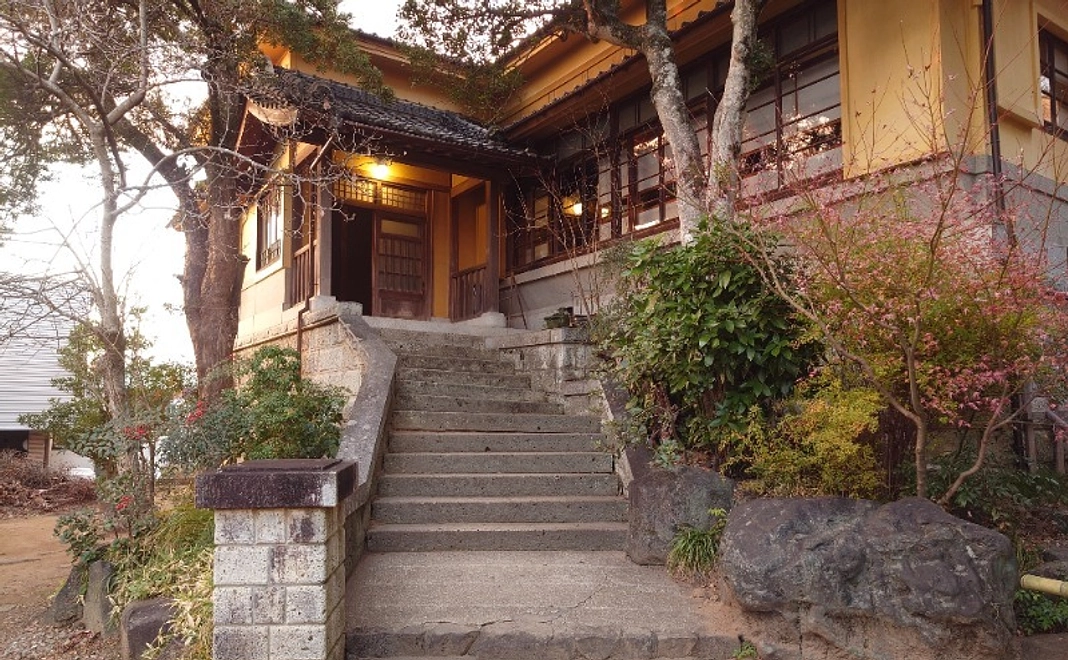
邸宅見学│1回
●邸宅見学│1回
・邸宅見学が1回できます。
・1口で1名様がご利用いただけます。
・2025年7月までに、メールで邸宅見学権をお送りします。
・メールの送信日を発効日とし、発効から1年を有効期限といたします。
・開館日であればいつでもご来館いただけます。
===以下もお届け===
●お礼メール
●邸宅内のパネルにお名前掲載(希望制)
・2026年3月末まで邸宅内にお名前を掲載します。
- 申込数
- 84
- 在庫数
- 制限なし
- 発送完了予定月
- 2025年7月
10,000円+システム利用料
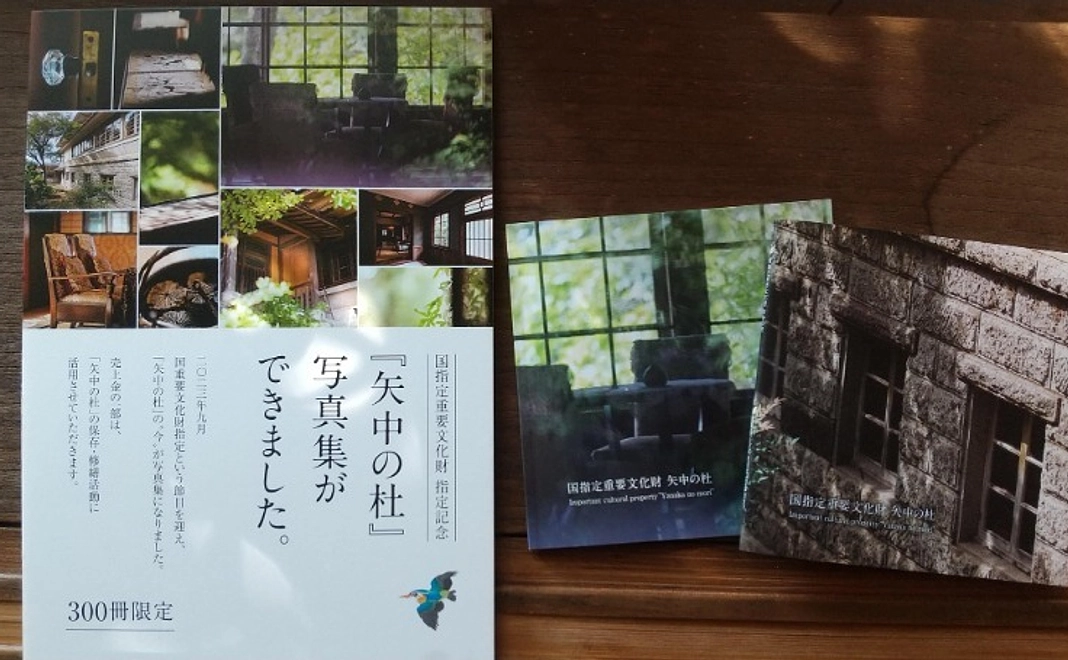
国重要文化財 指定記念│矢中の杜写真集
●国重要文化財 指定記念│矢中の杜写真集
・国重要文化財に指定された際に制作した記念写真集です。
・写真は野中典子様による撮影です。
・再販予定はないので、ぜひこの機会にお手に取ってご覧ください。
●矢中の杜リーフレット
===以下もお届け===
●お礼メール
●邸宅内のパネルにお名前掲載(希望制)
・2026年3月末まで邸宅内にお名前を掲載します。
- 申込数
- 80
- 在庫数
- 120
- 発送完了予定月
- 2025年7月
5,000円+システム利用料

邸宅見学│1回
●邸宅見学│1回
・邸宅見学が1回できます。
・1口で1名様がご利用いただけます。
・2025年7月までに、メールで邸宅見学権をお送りします。
・メールの送信日を発効日とし、発効から1年を有効期限といたします。
・開館日であればいつでもご来館いただけます。
===以下もお届け===
●お礼メール
●邸宅内のパネルにお名前掲載(希望制)
・2026年3月末まで邸宅内にお名前を掲載します。
- 申込数
- 84
- 在庫数
- 制限なし
- 発送完了予定月
- 2025年7月
10,000円+システム利用料

国重要文化財 指定記念│矢中の杜写真集
●国重要文化財 指定記念│矢中の杜写真集
・国重要文化財に指定された際に制作した記念写真集です。
・写真は野中典子様による撮影です。
・再販予定はないので、ぜひこの機会にお手に取ってご覧ください。
●矢中の杜リーフレット
===以下もお届け===
●お礼メール
●邸宅内のパネルにお名前掲載(希望制)
・2026年3月末まで邸宅内にお名前を掲載します。
- 申込数
- 80
- 在庫数
- 120
- 発送完了予定月
- 2025年7月
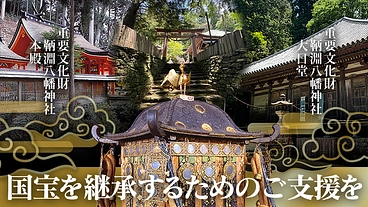
地域に息づく宝を次世代へ!鞆淵八幡神社の修復にご協力ください
- 現在
- 3,730,000円
- 支援者
- 210人
- 残り
- 22日
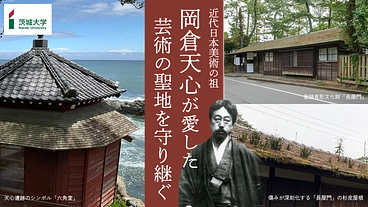
五浦美術文化研究所|雨漏り進む有形文化財・長屋門に一刻も早い修繕を
- 現在
- 3,120,000円
- 寄付者
- 101人
- 残り
- 33日
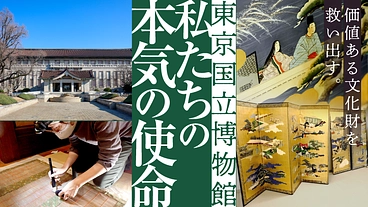
東京国立博物館|価値ある文化財を救い出す。源氏物語図屏風、修理へ
- 現在
- 61,825,000円
- 寄付者
- 2,864人
- 残り
- 29日
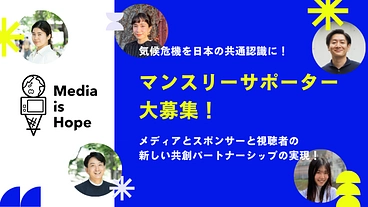
Media is Hope マンスリーサポーター大募集!
- 総計
- 16人
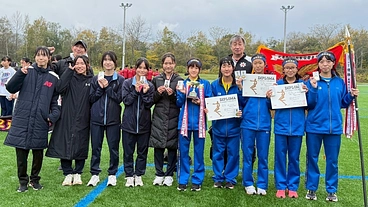
千歳市立富丘中学校陸上部 全国中学駅伝への挑戦
- 現在
- 287,000円
- 支援者
- 45人
- 残り
- 14日
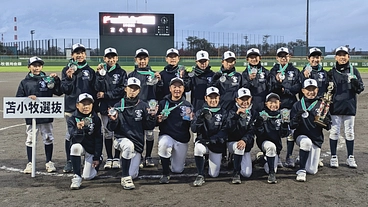
北海道から広島へ!苫小牧選抜、全国大会へ挑戦します!
- 現在
- 741,000円
- 支援者
- 134人
- 残り
- 24日
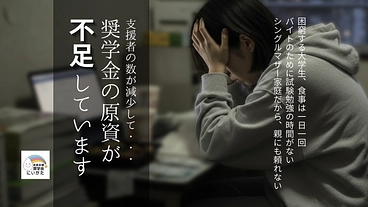
奨学金の原資が不足しています│未来応援奨学金にいがた2025
- 現在
- 1,745,000円
- 支援者
- 93人
- 残り
- 29日
